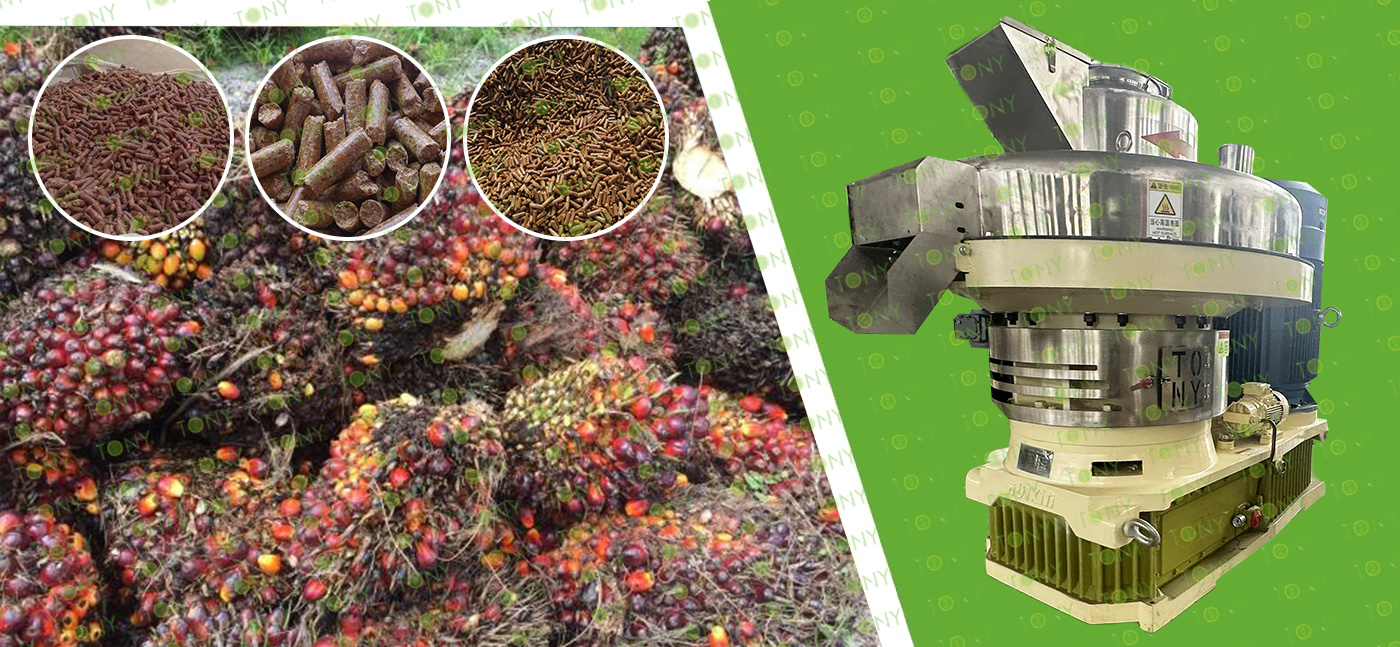Biomass pellet machines can process empty fruit bunches (EFBs) into fuel pellets. EFBs are one of the most promising biomass feedstocks in the palm oil cultivation and processing industries. The process and advantages of processing EFBs into fuel pellets are as follows:
1. Suitability of Empty Fruit Bunches (EFBs) as a Raw Material
Compositional Characteristics: EFBs are rich in lignocellulose (cellulose, hemicellulose, and lignin). Lignin softens during high-temperature compression and acts as a natural adhesive, allowing them to be formed without the addition of glue, making them suitable for fuel pellet processing.
Resource Advantages: EFBs are the primary waste product after palm oil extraction (accounting for approximately 70% of palm oil processing waste). With concentrated sources and large production volumes (especially in Southeast Asia's major palm oil-producing regions), they represent a "waste-to-treasure" resource utilization strategy, reducing raw material costs. Pretreatment Requirements: EFB has a high moisture content (fresh EFB can have a moisture content of 60%-70%) and must first be dried to reduce the moisture content to 10%-15% (the optimal moisture range for pelleting). It also requires pulverization to break it into uniform, fibrous material for subsequent compression molding.

2. EFB Processing in a Biomass Pellet Machine
Based on the characteristics of EFB (fiber structure, moisture content, etc.), the biomass pellet machine completes pelletization through the following steps:
Pulverization: Breaks EFB into fine, 3-5mm fiber particles, increasing the surface area and facilitating subsequent drying and compression.
Drying: The pulverized EFB is maintained in a dryer to maintain a reasonable moisture content (typically 10%-15%) to prevent clumping and breakage during molding. Compression Molding:
The core components of the biomass pellet machine (the compression wheel and die) apply high pressure to the dried EFB fibers. Friction generates heat (typically 80-120°C), softening the lignin and bonding the fibers together, resulting in cylindrical pellets with a diameter of 6-10mm.
Cooling and Screening: The pellets, at a high temperature after molding, need to be cooled to room temperature to stabilize their structure. They are then screened to remove debris and obtain qualified EFB biomass pellets.
3. Advantages of EFB Pellet Fuel
Environmental Benefits: EFB pellets achieve near-carbon neutrality (CO₂ absorbed during growth balances CO₂ released during combustion), are low in sulfur and nitrogen, and emit far fewer pollutants than fossil fuels.
Economic Benefits: EFB pellets are processed from agricultural waste, resulting in low raw material costs and addressing environmental concerns associated with EFB stockpiling (such as mold and insect infestation).
Applications: EFB pellets can be used as fuel for industrial boilers, power plants, and home heating. With a calorific value of approximately 16-19 MJ/kg, they are comparable to wood pellets and can effectively replace coal and fuel oil.
Summary
EFB pellet machines are fully adapted to the processing needs of empty palm fruit bunches (EFBs). Through appropriate pretreatment and equipment tuning, this waste resource can be converted into efficient, clean pellet fuel. This not only conforms to environmental protection trends but also creates additional economic value for the palm industry. This technology has great potential for expansion, especially in major palm-producing regions such as Southeast Asia.





















